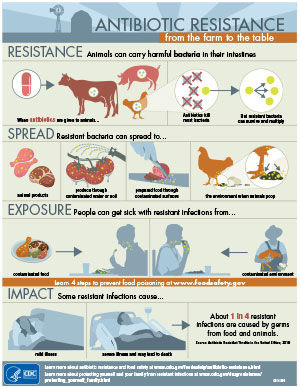While many foodborne infections are mild and do not require treatment, antibiotics can be lifesaving in severe cases. Antibiotic resistance compromises our ability to treat these infections and is a serious threat to public health.
Salmonella and Campylobacter, two of the many bacteria commonly transmitted through food, cause an estimated 410,000 antibiotic-resistant infections in the United States each year.1
This webpage provides an overview of antibiotic resistance, how it connects to food safety, and what you can do to protect yourself and others from foodborne illness.






















.jpg)









No hay comentarios:
Publicar un comentario